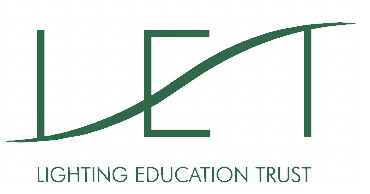Frequently Asked Questions
Got a question, view the FAQ page.
Contact us
Contact Pom Daniells for more information on let@cibse.org or 020 8675 5211.
Summary of the Lighting Design course content
As Innes says,
‘Lighting is both an art and a science - and the science element is often clouded by technical terms, complex physics and mathematics’!But please do not be too concerned about this. As you might expect the ‘fundamentals’ part of the course explains the physical properties of light and its physiological effect on humans. It will therefore cover some of the ‘physics’ of light and some of the lighting ‘mathematics’ by way of lighting calculations that today are performed by modern lighting design software - but that’s the point - in professional practice you will be using such software to undertake the necessary design calculations, you will not be doing difficult calculations ‘by hand’. So do not be too concerned if, whilst studying the fundamentals, you feel a little lost with the mathematics, which is to be expected, especially if it has been some time since you last studied such things as equations and trigonometry. It should not impede your ability to succeed on the course. All we are expecting of you is that you appreciate the principles behind these calculation methods; because again quoting from Innes (2012), ‘No matter what science and technology is involved, there are only a few generic luminaire (light fixture) types and successful lighting projects rely on the intelligent application of simple principles’. The lighting designer must therefore first choose the lighting effects they desire to create and only then the lighting equipment to deliver that vision, finally checking using (the free) lighting design software to perform the necessary calculations and to visualise the result. So it’s not the technology that creates great lighting - it’s the lighting designer.
So Modules A will guide you through the principles behind the application of lighting design and encourage you to consider both the artistic and scientific methods and thought processes of each core element.
In Module B, we look both at light sources and the way light is produced by different forms of lamp (tungsten halogen, low- and high-pressure discharge lamps and LEDs); and the light fixtures or ‘luminaires’ that house these lamps and direct the light they produce to where it is needed.
Module C: describes in simple terms the effect of light on a person. You will be introduced to the visual system; the eye and brain how they receive light and what that system does under changing conditions. Understanding this will enable the student to consider how much light is needed, contrasts between task and background and how light affects our health.
Module D: introduces the student to the fundamentals of lighting design. Perhaps some of the information already gained will begin to make sense now. Lighting is considered in terms of what is needed to see a task clearly; create mood; to assist with movement about a space; to reveal the architecture of the space and to play with perception. Light is also considered in terms of quantity and quality. You then learn how to create a design by understanding what is going on; how much light is required and what sort of contrast is needed for a particular task.
Module E: introduces sunlight and daylight to the student. For most buildings daylight is the starting point for any lighting design so understanding what it is how it performs and how to estimate the amount is very important. Some buildings require the designer to prevent sunlight entering a space, how to deal with this and how to design for daylight are all covered.
Module F: Interior lighting; to illustrate the different lighting techniques this module has been split into 5 sections covering lighting for offices, retail, Museums and galleries, leisure and a final miscellany of different building types. Extensive use is made of case studies to backup the explanation and techniques described.
Module G: Covers lighting controls, why we should use them and what are their benefits? What to avoid if they are not to be a nuisance. Can they save energy and improve health and well being.
Module H part 1: Visualisation of interior lighting using DIALUX. Preparation for the design project
Module I: Functional exterior lighting including car parks lighting for sports and roads; what is obtrusive light and how to minimise it, case studies are provided.
Module J: Architectural exterior lighting including landscape lighting, floodlighting of buildings and amenity lighting. A section on master planning is included.
Module K: Environmental & Ecological aspects of lighting; this module has an introduction by CfDS (Campaign for Dark Skies) and will explore how light affects the natural world and the built environment. A case study will include details from an Environmental Impact study.
Module H part 2: Visualisation of exterior lighting using DIALUX. Preparation for the design project
Module L: Emergency Lighting – an introduction to designing an emergency lighting installation.
Module M: Electrical installation associated with lighting installations; commissioning of lighting installations.
